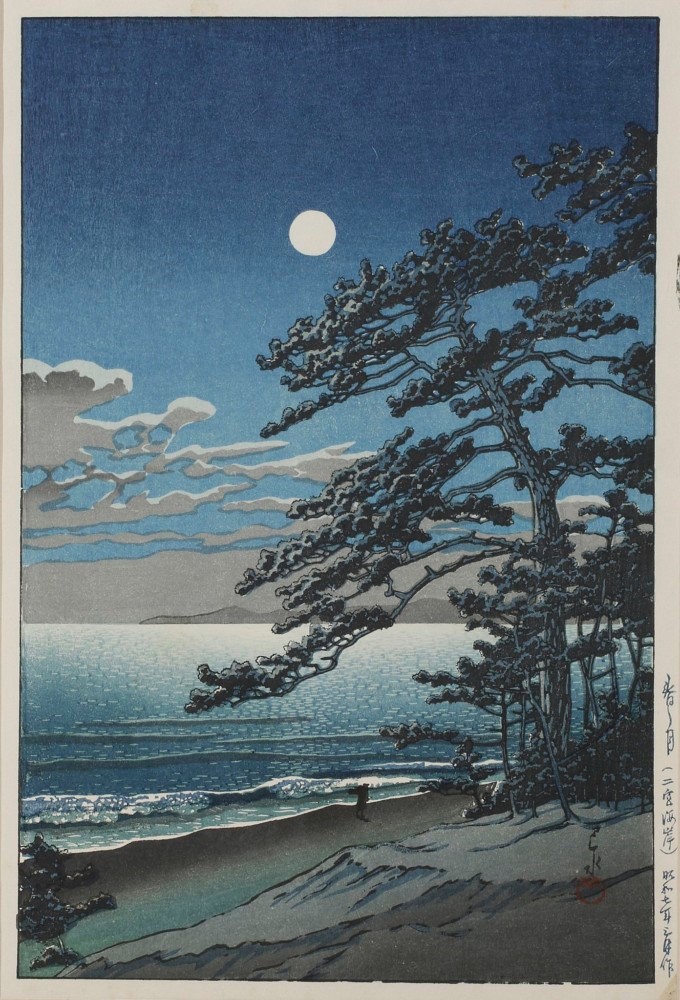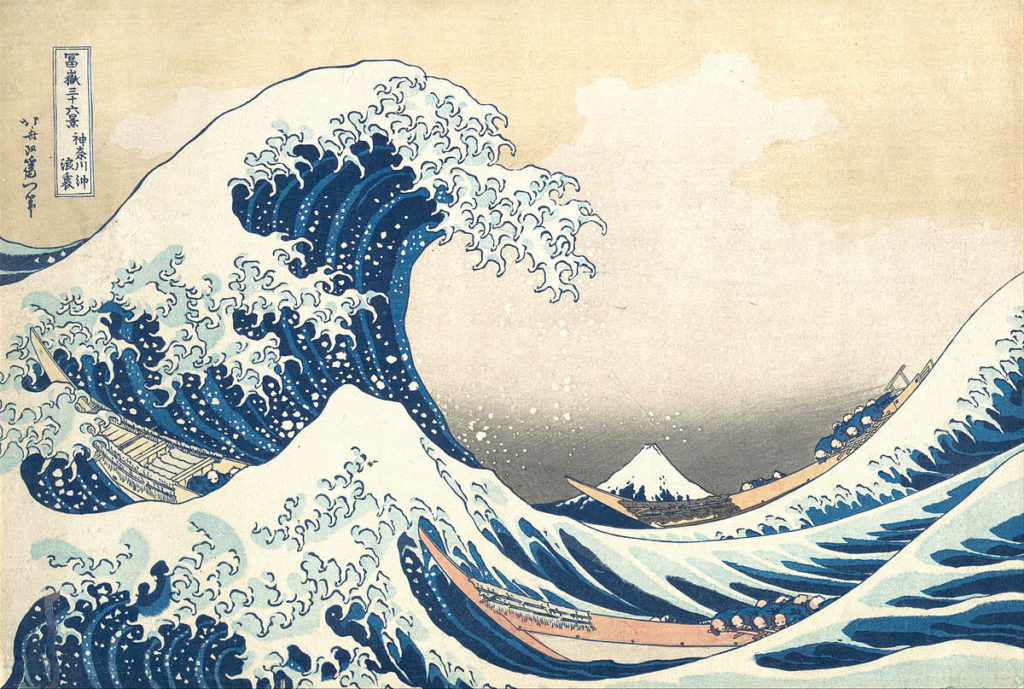Ebb and Flow: The Wave Motif in Japanese Art
19/07/2017 Chiswick Curates, Asian Art
For an island nation like Japan, the wave is a powerful and enduring symbol. It appears across centuries of Japanese art and design, representing both calm and chaos, transience and strength. From Buddhist cosmology to textile patterns and woodblock prints, the ebb and flow of the sea has long captured the imagination of Japanese artists and collectors alike.

Waves in Shinto and Nature
According to Shinto belief, all elements of nature are considered to possess spiritual essence. Mountains, rivers, stones and the sea are seen as living presences, not passive backdrops. In this context, waves are not just decorative forms but energetic forces — expressions of divine power and constant movement.
This reverence for nature can be seen across a range of Japanese artistic traditions. From medieval ink paintings to Edo period prints, the wave motif is a recurring theme, often used to convey emotional depth, the rhythm of time and the impermanence of all things.
Seigaiha and Symbolic Meaning
One of the most recognisable expressions of this motif is seigaiha, meaning "blue sea and waves". It is an ancient pattern made of layered concentric arcs resembling stylised waves. Though originally used on Chinese maps to symbolise water, it first appeared in Japan on 6th-century haniwa funerary figures, and later became popular on clothing, ceramics and lacquerware.
Seigaiha is more than ornamental. It symbolises surges of good fortune, resilience and the cyclical nature of life. Even today, it remains a beloved motif in both traditional and contemporary design.

The Great Wave, Hokusai
Hokusai and The Great Wave
Arguably the most iconic example of the wave in Japanese art is Katsushika Hokusai’s The Great Wave off Kanagawa. Created in the early 1830s, this woodblock print is instantly recognisable for its dramatic depiction of towering water about to crash over fishing boats.
Though produced during a time of restricted foreign trade, the print reflects the influence of Dutch perspective techniques and went on to inspire Western artists including Van Gogh, Monet and Whistler. Thousands of prints were sold in Japan, and the work has since become a symbol of both national identity and global artistic exchange.
A Lasting Legacy in Japanese Art
Whether rendered in ink, porcelain or fabric, wave motifs continue to appeal to collectors. They bring with them not just visual beauty, but layers of cultural meaning, historical continuity and spiritual resonance. The wave represents the essence of Japanese aesthetics — elegance, impermanence and nature’s quiet power.
If you have Japanese art or antiques you would like valued, get in touch with our Asian Art department today for a free and confidential valuation. Or email asian@chiswickauctions.co.uk